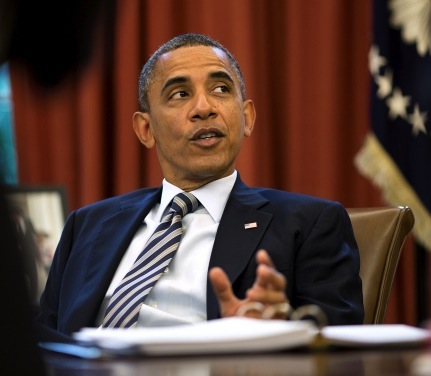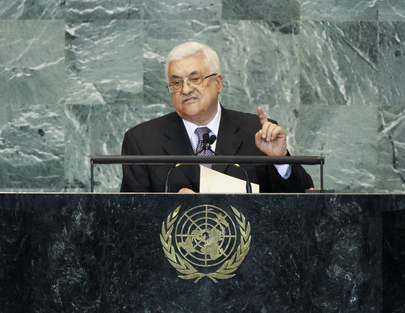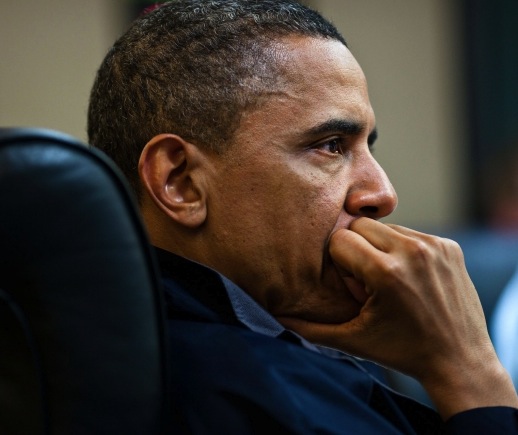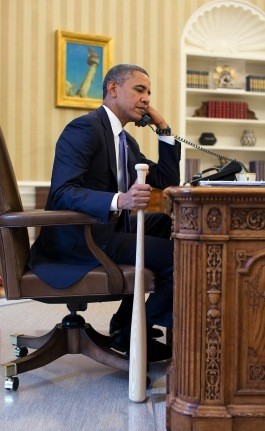The essence of the Obama administration’s legal justification for the drone war in Pakistan, Yemen, and elsewhere is that the bombs are dropped only to disrupt an imminent threat to America from militants involved in terrorist operations. This narrative is important for the administration to keep. And it is a complete lie.
 Scott Shane’s report in The New York Times, which I blogged about here, has been getting considerable attention for various reasons. The lede of the story was that Obama was scrambling to establish rules and a “legal architecture,” as Obama recently put it, to govern the Executive Branch’s use of weaponized drones in a potential Romney administration. Embedded in this was the concession that the Obama administration is decidedly not imposing any such legal architecture on itself, instead acting outside the law with ill-defined powers of unprecedented breadth.
Scott Shane’s report in The New York Times, which I blogged about here, has been getting considerable attention for various reasons. The lede of the story was that Obama was scrambling to establish rules and a “legal architecture,” as Obama recently put it, to govern the Executive Branch’s use of weaponized drones in a potential Romney administration. Embedded in this was the concession that the Obama administration is decidedly not imposing any such legal architecture on itself, instead acting outside the law with ill-defined powers of unprecedented breadth.
One of the important points from Shane’s piece was that the drone war is in fact not addressing imminent threats to the US. That is not how targets are chosen, contrary to administration claims. As Micah Zenko, fellow at the Council on Foreign Relations and a consistent critic of the drone wars, told Shane, “We don’t say that we’re the counterinsurgency air force of Pakistan, Yemen and Somalia, but we are.”
This undermines the Obama administration’s entire legal case for the drone war. If the use of force is not in self-defense and not addressing an imminent threat to the US, but is instead a murderous policing technology for the benefit of our puppet dictatorships, then it is in violation of both domestic and international law.
Justin Elliot at ProPublica interviewed Zenko to follow up on this point:
You were quoted over the weekend arguing that the U.S., with the campaign of drone strikes, is acting as the “counterinsurgency air force of Pakistan, Yemen and Somalia.” How did you come to this conclusion?
Under the Obama administration, officials have argued that the drone strikes are only hitting operational Al Qaeda leaders or people who posed significant and imminent threats to the U.S. homeland. If you actually look at the vast majority of people who have been targeted by the United States, that’s not who they are.
There are a couple pieces of data showing this. Peter Bergen of the New America Foundation has done estimates on who among those killed could be considered “militant leaders” — either of the Pakistani Taliban, the Afghan Taliban, or Al Qaeda. Under the Bush administration, about 30 percent of those killed could be considered militant leaders. Under Obama, that figure is only 13 percent.
Most of the people who are killed don’t have as their objective to strike the U.S. homeland. Most of the people who are killed by drones want to impose some degree of sharia law where they live, they want to fight a defensive jihad against security service and the central government, or they want to unseat what they perceive as an apostate regime that rules their country.
Why does this distinction matter so much?
This is a huge outstanding dilemma. Is the primary purpose of the drone attacks counter-terrorism, or is it counter-insurgency? If it’s counter-insurgency, that is a very different mission, and you have to rethink the justifications and rethink what the ultimate goal is of using lethal force.
There was a February article in the New York Times reporting that the goal of U.S. policy in Yemen was to kill about two dozen Al Qaeda leaders. There’s been about 50 drone strikes in Yemen since that article. Meanwhile, according to U.S. government statements, the size of AQAP has grown from “several hundred” to “a few thousand members.” So the question is, who is actually being targeted, and how does this further U.S. counterterrorism objectives?
Is this use of drone strikes to kill people who are not imminent threats to the U.S. new?
No. The marked shift was in summer 2008 when the Bush administration decided to significantly lower the threshold of who could be attacked.
The purpose of this change was to reduce threats to U.S. servicemembers in southern Afghanistan and to intervene where some suicide attacks were organized in the tribal areas of Pakistan. This was the time when the “signature strikes” really became ingrained. Bush administration officials called this the “‘reasonable man’ standard,” and if you were displaying what are called “patterns of behavior,” you could be killed.
People mistakenly think that this policy started under Obama, but it didn’t. It did accelerate markedly under Obama. He has had more drones to do this, was much more vigorous about authorizing their use, and expanded the signature strikes into Yemen.
How does this use of drone attacks square with official administration statements describing the policy?
They will never say that the United States uses drones to fight local insurgencies. If they made that case, they would have to create a new bastion of justifications. The current stated justifications are very carefully thought out and very deliberate to loosely adhere to the post-9/11 Authorization to Use Military Force and principles of Article 51 of the UN Charter, governing the use of force.
There has been a long-term fight with people within the administration who want to reform the policy and think the U.S. needs to be more transparent — both for domestic reasons and because of the precedents being set for the use of drone strikes. If other countries follow our practice in how they will use drone strikes, that would be a very unstable, dangerous world to live in.
When the front page of The New York Times and a fellow at the Council of Foreign Relations can matter-of-factly discuss the President’s deliberate lies to the American people, told in order to claim legal sanction for actions that are not legal, we should be aware of what this means. These are not radical, subversive sources. These are establishment sources. The claim that President Obama’s killing of over 3,000 people in the drone war has been largely illegal appears uncontroversial.
Is anyone suggesting the administration be prosecuted? Or is the political culture so cynical that adherence to the rule of law is not even a worthwhile pretense any more?






